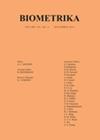深度克罗内克网络
IF 2.8
2区 数学
Q2 BIOLOGY
引用次数: 0
摘要
我们开发了一个名为Deep Kronecker Network的新框架,用于分析医学成像数据,包括磁共振成像(MRI)、功能性MRI、计算机断层扫描等。医学成像数据与一般图像在两个主要方面不同:i)样本量通常要小得多,ii)对模型的解释通常比预测结果更重要。因此,卷积神经网络等标准方法不能直接应用于医学成像分析。因此,我们提出了深度Kronecker网络,它可以适应低样本容量约束并提供所需的模型解释。我们的方法是通用的,因为它适用于矩阵和张量表示的图像数据,可以应用于离散和连续的结果。深度Kronecker网络建立在Kronecker积结构上,该结构隐式地在系数上强制执行分段平滑特性。此外,我们的方法类似于一个完全卷积网络,因为Kronecker结构可以用卷积形式表示。有趣的是,我们的方法也与Zhou等人(2013)提出的张量回归框架有很强的联系,该框架对张量系数施加了典型的低秩结构。我们使用来自阿尔茨海默病神经成像倡议的真实MRI数据进行分类和回归分析,以证明我们方法的有效性。本文章由计算机程序翻译,如有差异,请以英文原文为准。
Deep Kronecker Network
Summary We develop a novel framework named Deep Kronecker Network for the analysis of medical imaging data, including magnetic resonance imaging (MRI), functional MRI, computed tomography, and more. Medical imaging data differs from general images in two main aspects: i) the sample size is often considerably smaller, and ii) the interpretation of the model is usually more crucial than predicting the outcome. As a result, standard methods such as convolutional neural networks cannot be directly applied to medical imaging analysis. Therefore, we propose the Deep Kronecker Network, which can adapt to the low sample size constraint and offer the desired model interpretation. Our approach is versatile, as it works for both matrix and tensor represented image data and can be applied to discrete and continuous outcomes. The Deep Kronecker network is built upon a Kronecker product structure, which implicitly enforces a piecewise smooth property on coefficients. Moreover, our approach resembles a fully convolutional network as the Kronecker structure can be expressed in a convolutional form. Interestingly, our approach also has strong connections to the tensor regression framework proposed by Zhou et al. (2013), which imposes a canonical low-rank structure on tensor coefficients. We conduct both classification and regression analyses using real MRI data from the Alzheimer’s Disease Neuroimaging Initiative to demonstrate the effectiveness of our approach.
求助全文
通过发布文献求助,成功后即可免费获取论文全文。
去求助
来源期刊

Biometrika
生物-生物学
CiteScore
5.50
自引率
3.70%
发文量
56
审稿时长
6-12 weeks
期刊介绍:
Biometrika is primarily a journal of statistics in which emphasis is placed on papers containing original theoretical contributions of direct or potential value in applications. From time to time, papers in bordering fields are also published.
 求助内容:
求助内容: 应助结果提醒方式:
应助结果提醒方式:


